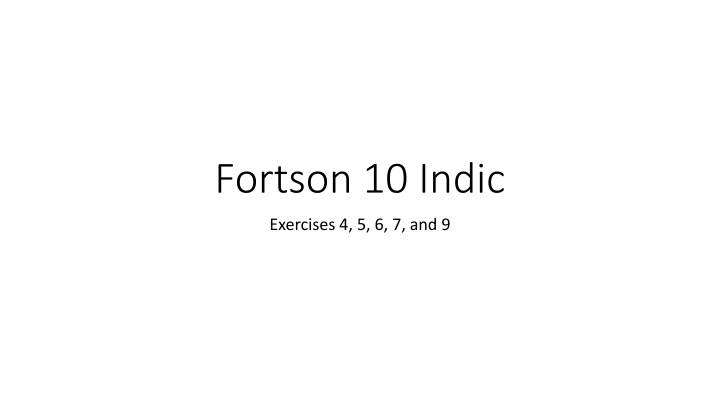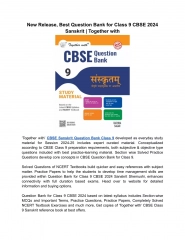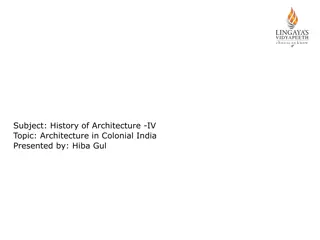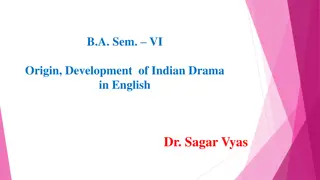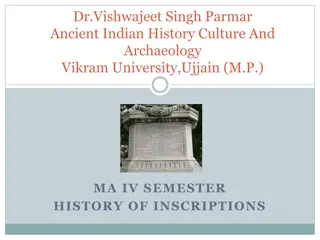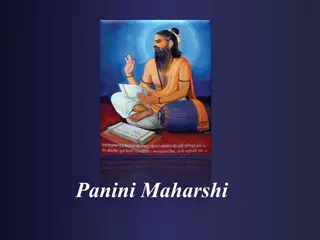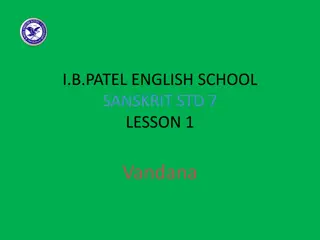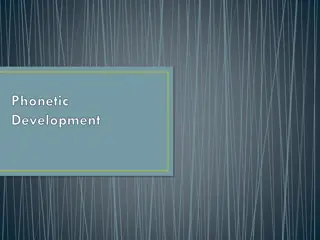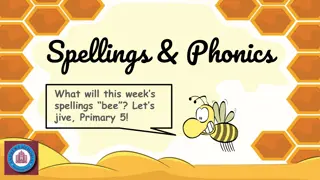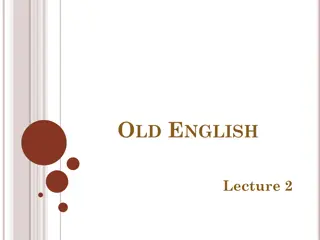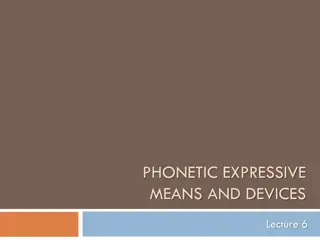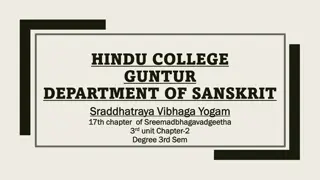Analyzing Phonetic Changes in Proto-Indo-European to Sanskrit
Delve into the intricate phonetic transformations from Proto-Indo-European to Sanskrit, exploring Bartholomae's Law, Grassman's Law, and other key sound shifts. Unravel the outcomes of various PIE forms in Sanskrit, applying these linguistic principles to decipher the Sanskrit counterparts. Explore how Bartholomae's Law alters stops and Grassman's Law impacts aspirated sounds, shedding light on the evolution of language.
Download Presentation

Please find below an Image/Link to download the presentation.
The content on the website is provided AS IS for your information and personal use only. It may not be sold, licensed, or shared on other websites without obtaining consent from the author.If you encounter any issues during the download, it is possible that the publisher has removed the file from their server.
You are allowed to download the files provided on this website for personal or commercial use, subject to the condition that they are used lawfully. All files are the property of their respective owners.
The content on the website is provided AS IS for your information and personal use only. It may not be sold, licensed, or shared on other websites without obtaining consent from the author.
E N D
Presentation Transcript
Fortson 10 Indic Exercises 4, 5, 6, 7, and 9
10.4 Give the Sanskrit outcome of the boldfaced part of the following PIE forms a. *h1eisi you go b. *isnont- setting in motion c. *dikto- indicated, pointed out d. *wisto- active e. * wr neuti covers f. *hsusto- having shined g. *h2 uksont- growing h. *h2wr sto- having rained so, what do we do? next slide
RUKI and more 10.7 says consonantal resonants *m and *n stay the same. This applies to b and e, but see 10.33? 10.10 says after *r, *u, *k, or *i, the sound *s > Proto-Indo-Iranian * , which turns into Sanskrit (a retroflex sh sound). This looks like it applies to a, b, d, e, f, g, and h. The s doesn t seem to have to be immediately after: another letter or so may intervene. 10.11 says that *palatal velars before a dental go to as well. This applies to c. 10.14 says *ei > *ai > e. This seems like it ought to apply to a, but there s a problem (see parens there) 10.33 says *n became retroflex after r or r . This seems to apply to e. 10.36 says consonantal laryngeals are lost a. *h1eisi you go > *e i (that s actually not a retroflex ( ) in the Sanskrit I looked up, so I m not sure what s up there) b. *isnont- setting in motion > *i nant- (maybe this n goes to retroflex because of retroflex ) c. *dik to- indicated, pointed out > *di ta- (Sanskrit = dishta: the t is retroflex too) d. *wisto- active > *wi to- e. * wr neuti covers > * wr euti f. *h2susto- having shined > *su to- g. *h2uksont- growing > *uk ont- this seems to be Wiktionary s *h ug-s- -ti grow > Sankrit (uk ti) h. *h2wr sto- having rained > * wr t-
Fortson 10.5 Apply Bartholomae s law and other sound changes to find the Skt outcome of: a. *rudhto- > *ruddho- b. *labhto- > *labdho- c. *mr dhto- > *mr ddho- d. *dughto- > *dugdho- 10.6 says in Bartholomae s law, voiced aspirate + voiceless unaspirated > voiced unaspirated + voiced aspirated: see changes indicated above. What other sound changes need to be applied?
10.6 It seems that here, Bartholomae s law changed the second stop into an aspirated voiced stop, but the first stop dropped out and there was compensatory lengthening. For example, by Bartholomae, *ug to- changed to *ug dho- But then the palatal g dropped out and the u lengthened to compensate, and we get * dh - But not only that, the aspirated consonant that was left retroflexed, so we get * h - (that little dot under the d indicates a retroflex, which is a sound made with the tongue flexed back a little bit from its ordinaryplace for an English d) In every case, Bartholomae changes the first consonant is absent, the second consonant is a retroflex aspirate, and the preceding vowel lengthens.
10.7 Apply Grassman s law and other sound changes to find predicted Sanskrit outcome: Grassman s law says that when there are two aspirated sounds separated by a sound or two, the first aspirated sound lost its aspiration. *dhedheh1mi > *dadh mi (laryngeal drops out and vowels merge too) (d dh mi) *dhug hroi > *dujhre (vowel merger and monophthongization > *e, and affrication of g h too) *bhewdhetoi > *bawdhate (vowel merger + monophthongization) *edhegwhet > *adaghat (vowel merger + labiovelars collapse into regular velars) *gheghose > *gaghasa
10.9 a root athematic present? b class VII, nasal infix c class IV or X: -ye/-yo present (5.32) could also be denominative (5.33) looks maybe also like a causal (o grade root + -eye-)(5.35), but that would have a vowel before the y: that might mean it s not a class X, which has aya- d class VI : looks like a tudati present: zero grade plus accent onthematic vowel (5.31) e simple thematic (5.30) f class V or VI (probably the thematic VI and NOT V) another tudati present: zero grade plus accent on thematic vowel (5.31) g class III: reduplicated a thematic (5.27) after Bartholomae dissimilated bh to b h class VII nasal infix type (see5.26, and see 10.42 for this being a Skt innovation))
